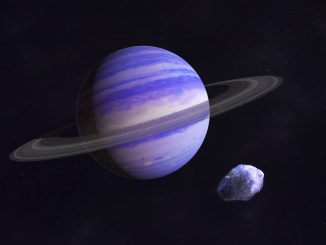
Finding ways to confirm life on planets outside of our Solar System is often at the forefront of exoplanet research. Now a team of graduate students at the University of Washington (UW) have found a way to aid this search by proposing that future telescopes should look for explosive volcanic activity as a potential marker for life on other worlds.
On Earth, major gases are recycled from the atmosphere to the planetary interior by plate tectonics, therefore it seems only natural to look for these processes on suitable exoplanet candidates. Characterising an exoplanets surface however is challenging and detecting whether a planet has plate tectonics or not, at this moment in time, is quite impossible.
To overcome our current technological limitations, graduates at a UW astrobiology graduate seminar, were tasked with finding alternative markers which might point to plate tectonic activity on other planets. Lead author Amit Misra, who has since graduated with a doctorate, modelled aerosols produced by volcanic eruptions for earlier project work and had the answer at his finger tips – massive volcanic outgassing. “Volcanism is expected to produce sulphur-based aerosols. On Earth the aerosols are sulphuric acid droplets, the same stuff that makes up the clouds of Venus. Depending on what makes up the bulk of the atmosphere, you could get sulphuric acid aerosols or elemental sulphur aerosols in the atmospheres of exoplanets,” explains Misra.
Detecting these long-lasting, high-up aerosols is the key to establishing volcanic activity on the surface below. “For large, explosive eruptions, the effect on the (planets) spectrum is very large – it can be the largest feature in the spectrum,” said Misra. But how long are these aerosols expected to remain in the atmosphere? “It’ll be impossible to know this beforehand for exoplanets, but based on what we see on the Earth, the aerosols can remain in the atmosphere from months to years depending on the size of the eruption. After the eruption of Mt. Pinatubo on 1991, aerosols had an effect on the atmosphere almost four years later. So if there’s a planet out there that’s similar to the Earth, the effect of these aerosols could last a few years. For exoplanets, the timescale could be longer or shorter – we just won’t know beforehand,” says Misra.
But what can volcanic outgassing tell us about the conditions on exoplanets, other than that large eruptions might be prevalent on the surface? Volcanic outgassing, on Earth, played a pivotal role in the development and maintenance of Earth’s atmosphere, leading to stable conditions that aided the development of life. Life, as we know it, is not possible without oxygen, consequently oxygen is largely considered the most promising biosignature because it very rarely forms in the absence of life. However, there are some scenarios in which oxygen forms abiotically, or without life. “Volcanism could help us determine if the oxygen was from biology because volcanic gases often react with and destroy oxygen, and a detection of both oxygen and volcanism suggests that there is a source of oxygen in the planetary environment, which could be life,” says Misra.
It is only massive eruptions however that are being targeted as explosive eruptions can send volcanic gases up into the stratosphere where they reside for long periods of time. Gases and volatiles released from smaller, nonexplosive volcanic eruptions on the other hand tend to return quickly to Earth’s surface. How likely is it that future space-based telescopes such as the James Web Space Telescope would be able to detect the signatures of these aerosols? “It all depends on having the right target such as a nearby (within about 33 lightyears away), Earth-sized exoplanet in its star’s habitable zone. And of course there needs to be an eruption on that exoplanet. It will be difficult to detect an explosive eruption with JWST, but large, ground-based telescopes that will come online in the next decade or so should be capable of detecting explosive volcanic eruptions. Observations in other wavelengths (outside the visible and near-infrared) would be difficult because the signal will generally be very poor because there are fewer photons that we observe from the planet and star at these wavelengths,” says Misra.
These findings, published in the June issue of the journal Astrobiology, could thus aid the process of choosing potential worlds to study for possible life, “we would need to try and understand the context of the planetary environment – which includes understanding the host star, the planet’s orbit, and whatever we can learn about the planet’s atmosphere – before making a claim for a detection of volcanism,” says Misra, but one day the research could help determine not only that a world is habitable, but is in fact inhabited.
This research was done through the Virtual Planetary Laboratory, a UW-based interdisciplinary research group, and funded through the NASA Astrobiology Institute.



